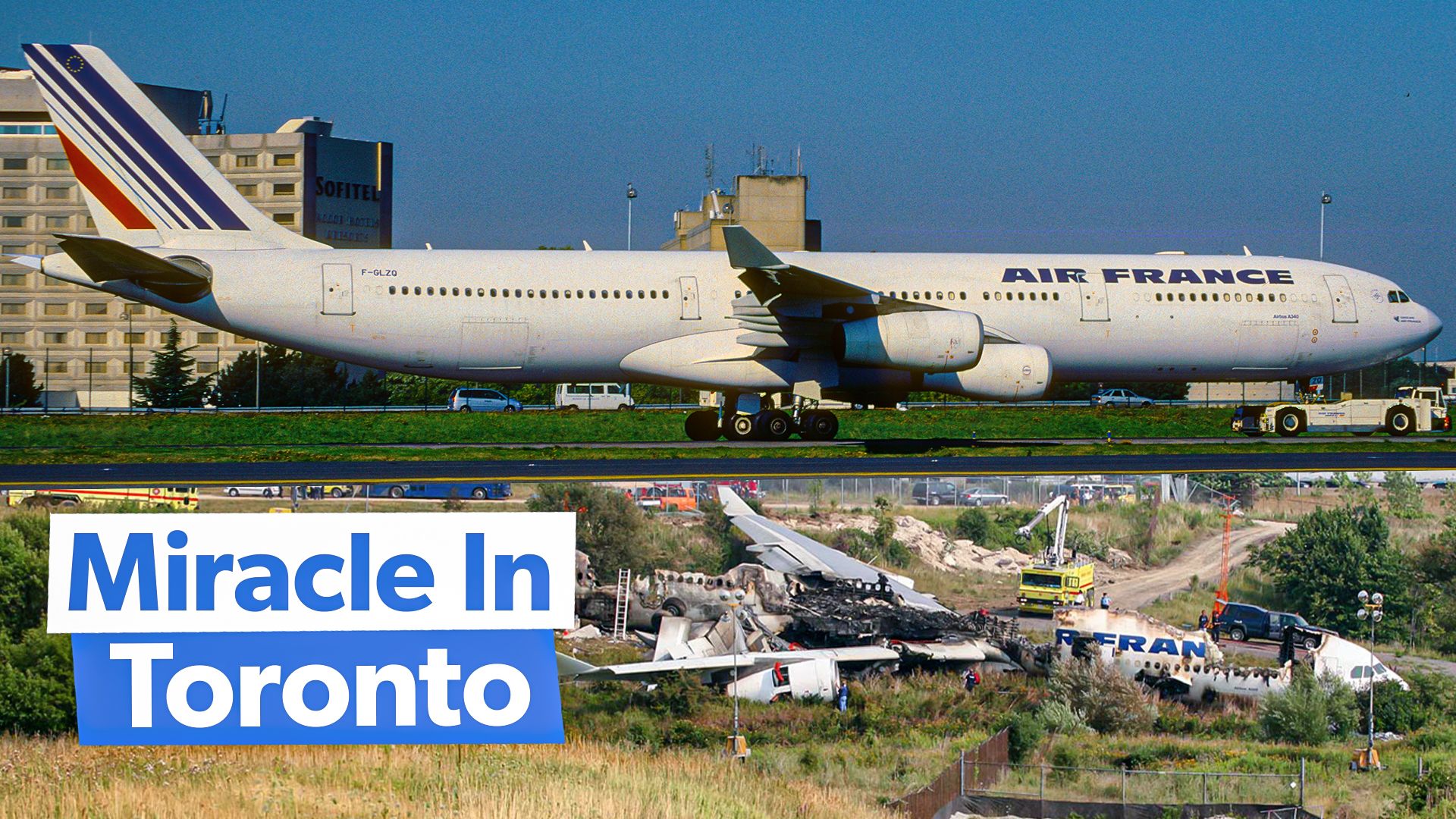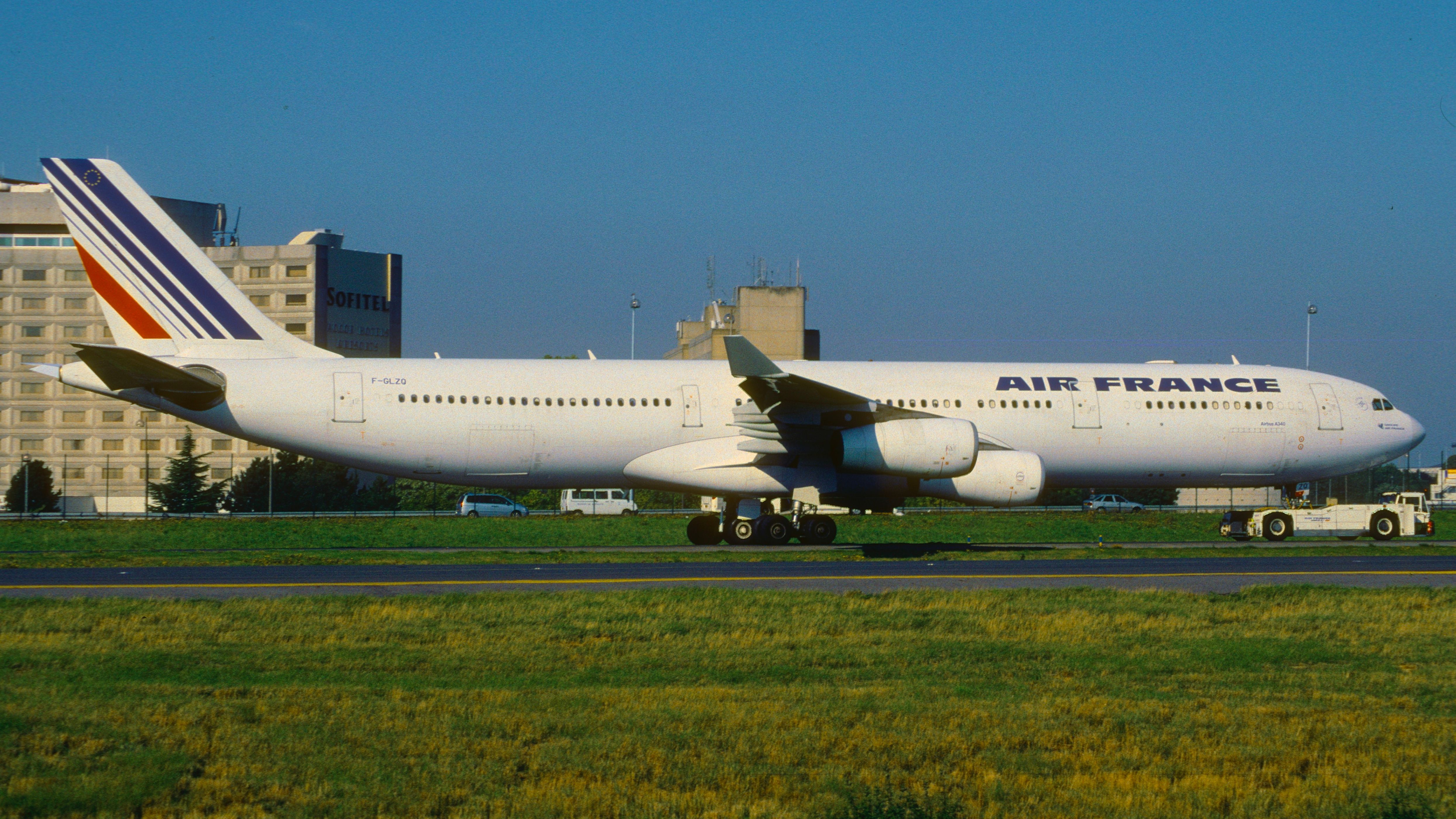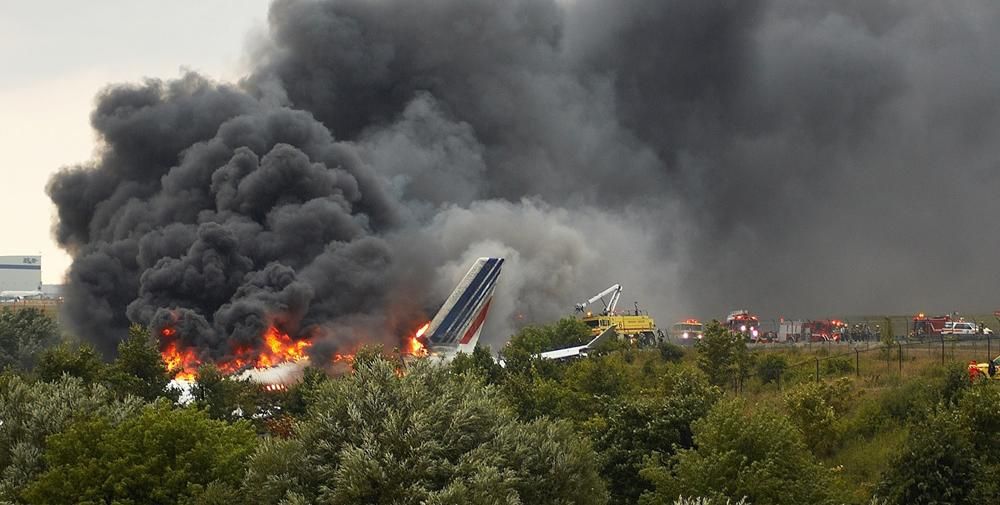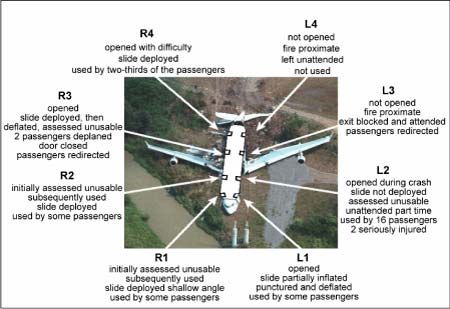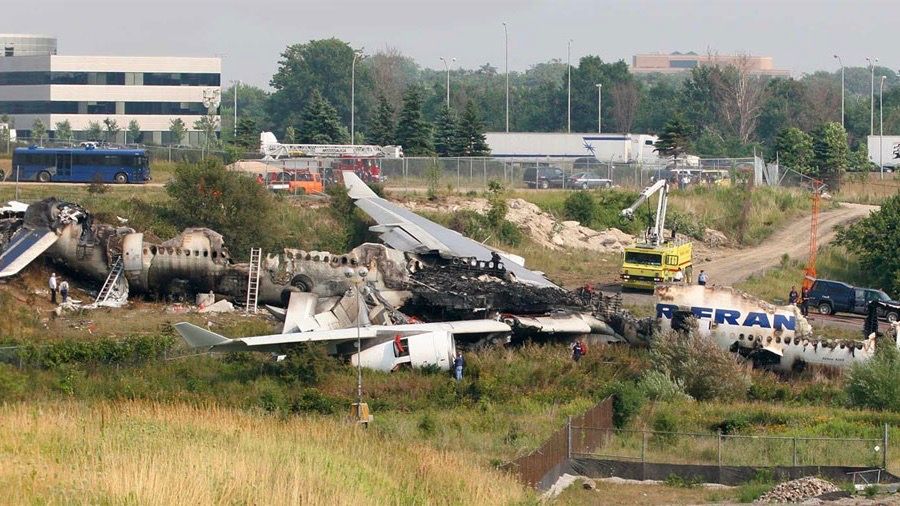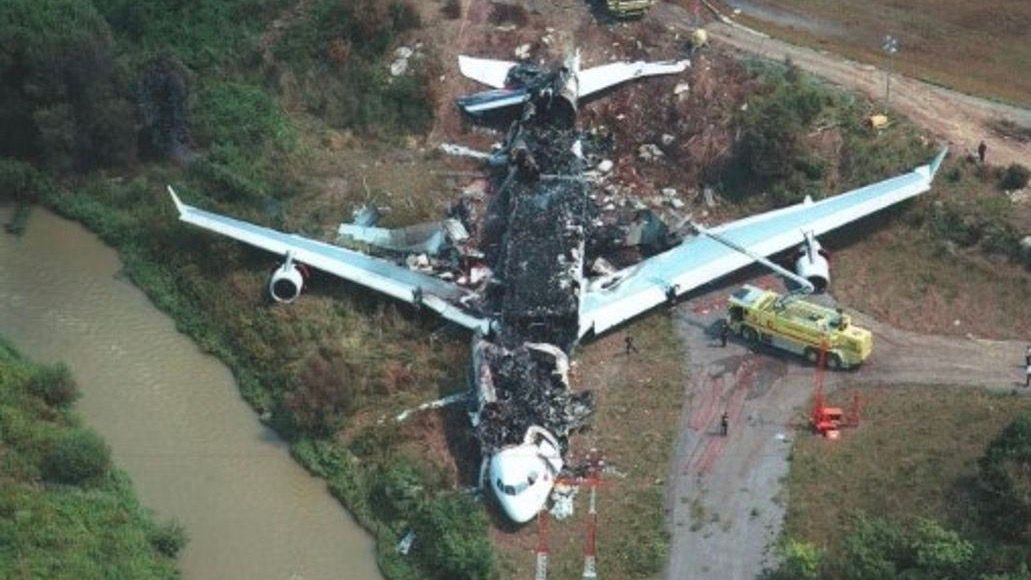Summary
- Air France Flight 358 faced poor weather conditions and made a hard landing at Toronto Pearson International Airport.
- The emergency evacuation saw cabin crew swiftly assist passengers despite failed systems, and the plane was evacuated in under 90 seconds.
- The Canada Transportation Safety Board credited the cabin crew for preventing the accident from turning into a tragedy.
It was August 2nd 2005. Air France flight 358 left Charles de Gaulle Airport in Paris, France on time. The Airbus A340-313 was bound for Toronto Pearson International Airport in Canada. There were 297 passengers onboard and 12 crew. The passengers were a mix of vacationers, business people and students excited about their foreign exchange program.
The crew
Flying that day was Captain Alain Rosaye and first officer Frédéric Naud. There were 10 cabin crew onboard, including the chief purser assisted by two pursers and a junior crew member who had been flying for only five weeks. The rest of the cabin crew had been flying for between four and twenty years.
|
Cabin Crew Position |
Cabin Crew Experience at Air France |
|---|---|
|
L1 (Chief Purser – Minimum Crew) |
20 years |
|
L2 (Forward Purser – Minimum Crew) |
18 years |
|
L3 (Minimum Crew) |
8 years |
|
L4 (Aft Purser – Minimum Crew) |
13 years |
|
R1 (Supplemental Crew) |
5 years |
|
R2 (Supplemental Crew) |
10 years |
|
R3 (Minimum Crew) |
10 years |
|
R4 (Minimum Crew) |
5 years |
|
Cabin Crew Seat 9 (Additional Crew) |
5 weeks |
|
Cabin Crew Seat 10 (Supplemental Crew) |
4 years |
None of the crew were allowed to speak about the accident and no names of the crew can be found. The sources for this article are taken from: The Canada Transportation Safety Board report, CTV, Red Orbit, Wikipedia, CBC, Krem, CBC (1), The Toronto Star , Bureau of Aircraft Accident Archives and the Sydney Morning Herald.
Poor weather
The flight had been uneventful. There was inclement weather in Toronto, with severe winds, heavy rain, and thunderstorms. Aircraft were being diverted and flights were being canceled. The flight crew knew about the bad weather prior to the flight and had allowed for extra fuel in case of diversion. They had enough fuel to hold for 23 minutes in Toronto.
Their alternate airport, in case of diversion, was Ottawa. They were asked to enter a holding pattern prior to landing due to the weather. The chief purser made a passenger announcement that they would be delayed because of the weather. On the final approach, the flight crew were warned that an aircraft ahead of them had reported poor braking action.
On landing
Although it was afternoon, the sky outside was almost black. There was some turbulence and the passengers were getting agitated. Lightening was all around the aircraft. The aircraft rocked from side to side. Just as they were about to land, they hit a heavy shower during the flare, and the lights went out. It was a hard landing. The passengers, relieved that their ordeal had ended, started to clap, not knowing that this was just the beginning. It was 16:02 local time.
“It all happened so quickly. It was like being in a movie. It was scary because it did land OK for a few seconds and we actually clapped – because we were down. We clapped and only seconds later, there was a big, big impact.”
Passenger flight 358 as told to Red Orbit.
The aircraft landed 3,800 feet from the start of the 9,000-foot runway. It was traveling at 148 knots or 170 miles per hour. With a tailwind and wet tarmac, it slid down the runway, overran, and hit the creek at 81 miles per hour. Emergency braking was applied at the last minute, but it was too late to stop the aircraft. There were several bounces, and oxygen masks fell down. Overhead lockers opened, littering the cabin with debris. Curtain rails fell down. Black smoke filled the air, and fire broke out on the left rear side of the aircraft.
“It was like being in a car accident but it keeps going and going, non-stop.”
Passenger on flight 358 as told to CBC.
Emergency evacuation
Once the aircraft had come to a stop, the cabin crew got out of their seats, ready to open the exits. The emergency lighting, floor pathway lighting, and PA system all failed. One crew member at the rear initiated the evacuation as they could see fire outside. Acrid smoke was starting to fill the cabin and the smell of jet fuel lingered. Passengers were starting to panic, some were trying to climb over the seats in a desperate attempt to flee the burning aircraft.
“They were very quick to get up and open the doors and help people and calm them.”
“The stewardesses started pushing everyone out.”
Passengers flight 358 as told to Krem.
Two doors at the rear on the left side remained closed because of the fire. One of the slides on the right side was punctured by debris, so it had deflated. One slide on the left side did not deploy. Only four exits out of eight were usable. In the panic, some people jumped out of the doors without slides and were injured by the fall. The cabin crew directed passengers away from exits that could not be used. The impact made some doors difficult to open, and some slides were affected.
Photo: CTSB
Post evacuation
One cabin crew assisted passengers at the bottom of the slide. The chief purser and first officer and one cabin crew member got flashlights and proceeded to check the cabin and lavatories to make sure that no other people were still onboard. They used both aisles and confirmed the aircraft was empty before evacuating. The cabin crew, now on the ground, led people away from the aircraft.
“As soon as the plane stopped, they immediately opened the side of the plane where they couldn’t see any flames and then told us to jump. And we all began jumping and running. We were running really fast… It was really, really scary.”
Passenger flight 358 as told to the Sydney Morning Herald.
The aircraft was evacuated in less than 90 seconds. It was described as ‘textbook’. The first officer was last to leave the aircraft. Emergency response teams arrived at the scene just 52 seconds after the accident was reported. Everyone was desperate to get away from the burning wreck, fearing it would explode. Some passengers took shelter under a bridge. One lady had broken her leg and could only sit in the mud, waiting for help. Two cabin crew stayed with her. Just after the evacuation, there was a loud explosion and fire, and thick black plumes of smoke shot into the sky.
Horror movie
Some of the survivors clambered up a muddy ridge to the busy highway above to get help. Their clothes were drenched with rain, and some had lost their shoes in the mud. It was rush hour, and traffic was slow in the bad weather. Motorists stopped to help take survivors to the airport or the hospital. They described the scene as something like that of a ‘zombie horror movie’ with walking wounded clambering up the ridge in the rain and smoke.
All 309 onboard the Airbus 340, survived. Twelve people were injured. The captain had head injuries from hitting the controls on impact and back injuries as his seat was wrenched out of place. Passenger injuries included broken leg and ruptured vertebrae, and one infant was taken to hospital for smoke inhalation. The fire continued to burn for two hours, and the aircraft was completely destroyed.
Photo: Transportation Safety Board of Canada
The cause of the accident
The Canada Transportation Safety Board said that major factors in the accident were the unfavorable weather conditions and poor landing decisions by the flight crew. Added to that, there was poor visibility, and the runway assigned was the shortest runway at the airport. The aircraft touched down almost halfway down the runway, and the full thrust reversers were not used until 17 seconds after touchdown.
The accident was lauded as the ‘Miracle in Toronto’ as, upon seeing the aircraft on fire, it was assumed that there would not be survivors. Thanks to the actions of the cabin crew, no one perished.
The report says that the “Performance of the cabin crew was exemplary and professional and was a significant factor in the successful evacuation of the accident.” It also noted that the cabin crew knew that there was a possibility of a missed approach, so they would have been in a state of heightened awareness during the landing phase and would be prepared to respond immediately in an emergency. The three additional crew members onboard (six minimum crew required only) no doubt contributed to the quick evacuation.

